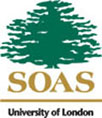Welcome to the Website "Urban Violence in the Middle East"
"Urban Violence in the Middle East" is a joint Anglo-German research project based on a collaboration of ZMO and SOAS from 2010 until 2013. The project is funded by DFG and AHRB. The main objective of the research project is to investigate the emergence and different forms of public and popular violence in selected Ottoman, Arab and Iranian cities from the early 19th century to the 1960s in a wide geographical setting which stretches from Tunisia to Iran. It aims at integrating these findings into discussions on urban violence which were developed with regard to other world regions, thus contributing to a globally comparative understanding of the phenomenon.
The historical context of the research is provided by processes of Ottoman and Qajar reform in the 19th century and the consolidation of nation states after the First World War, a period characterised by both urbanisation and state centralisation. Cities are studied as the 'landscapes' of contestation between imperial subjects and rulers on the one hand, and between citizens and states after the First World War on the other.
The project aims to understand the crucial relationship between political and social protest, the evolution of the urban public sphere and the physical expansion of urban centres. Urban violence is regarded as an expression of changes in urban governance and in the wider political environment with reference to both internal and external factors. Of relevance here is what episodes of urban violence tell us about changes in the urban public sphere during the period of reform of the Ottoman and Qajar empires and in the age of nation states, and how these changes reflected wider trends across the region and European or western influences. Both physical and symbolic violence can be understood as a 'ritual of power' and a ploy for popular and state legitimacy in the context of street politics, the enforcement of the 'rule of law' through state agencies, political propaganda, ritual performance and public ceremonial. The researchers are also interested in the relationship between episodes of violence and processes of urbanisation. They investigate in what ways episodes of violent protest relate to the transformation of the physical landscape of the city and to changes in the specific settings of popular contestation and state action.




